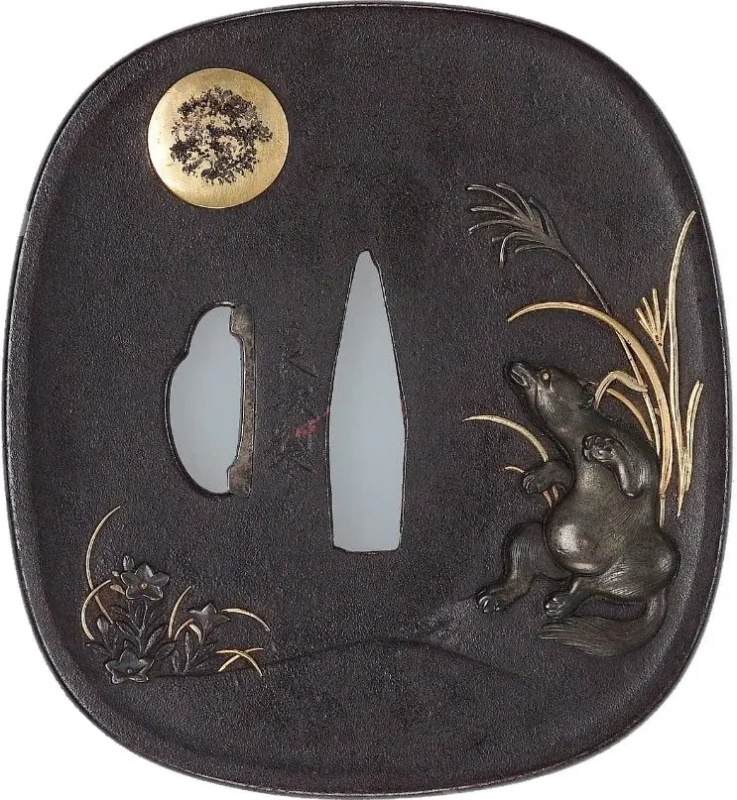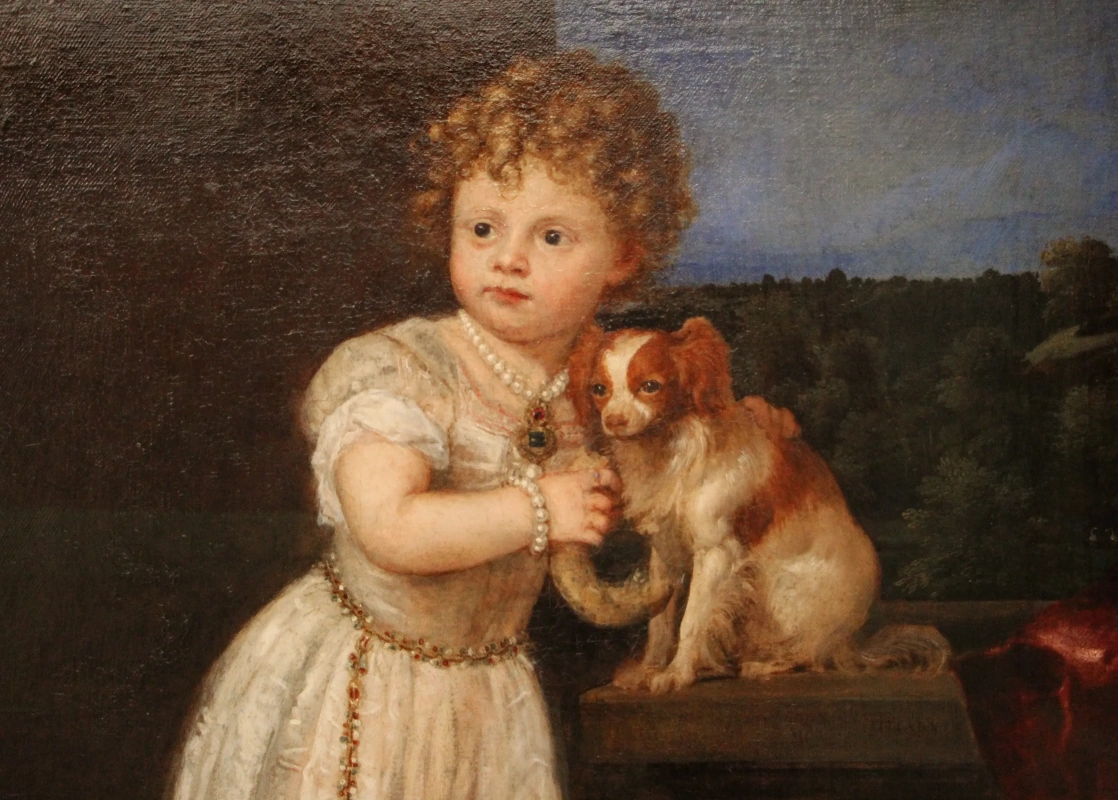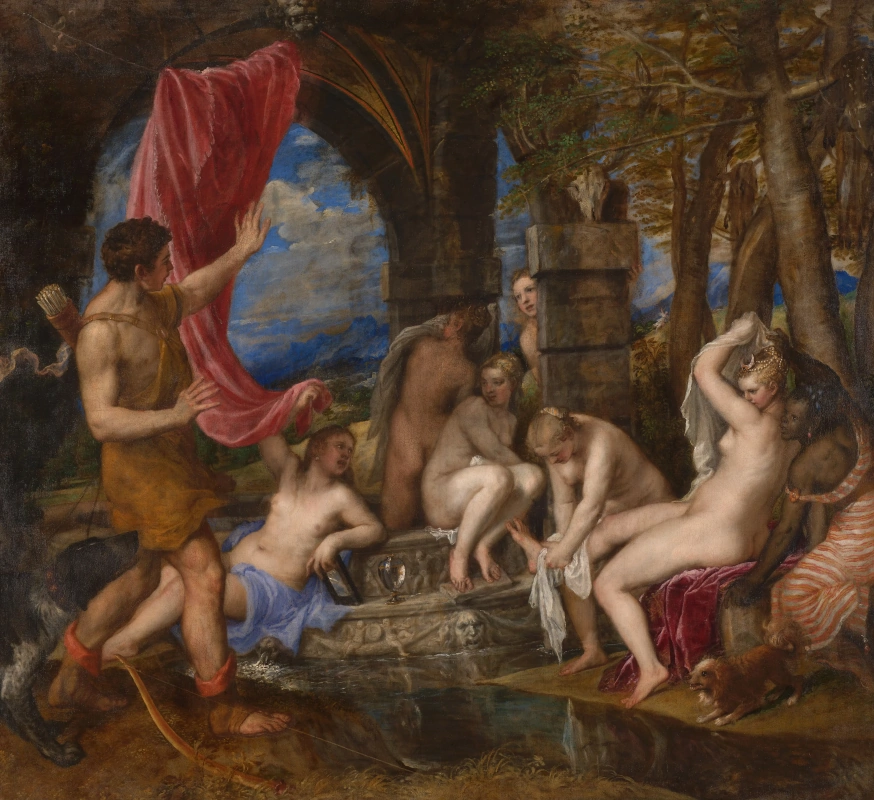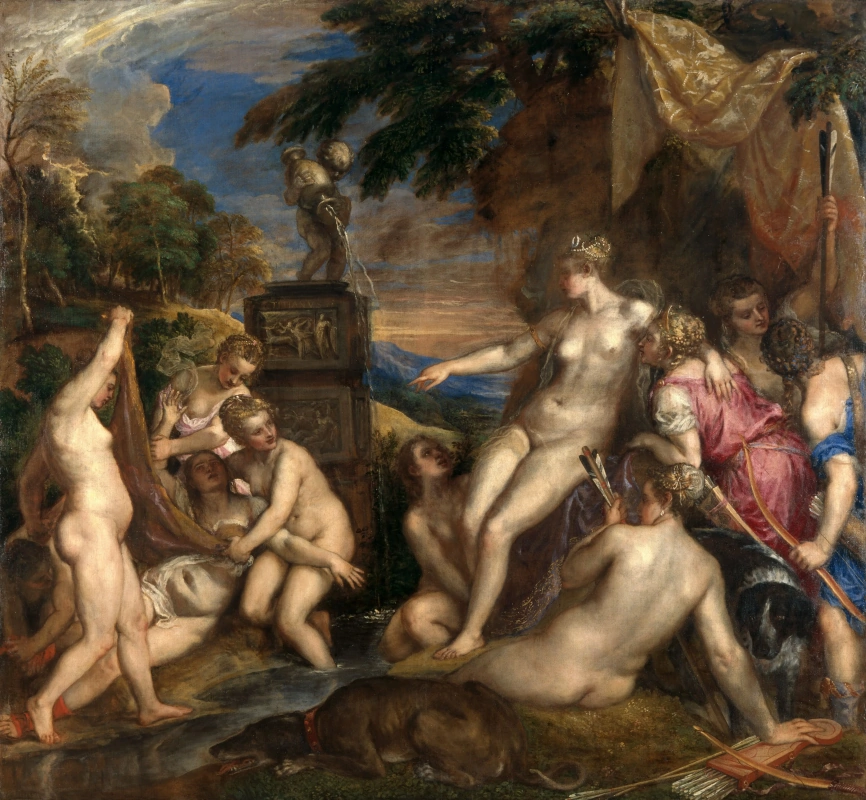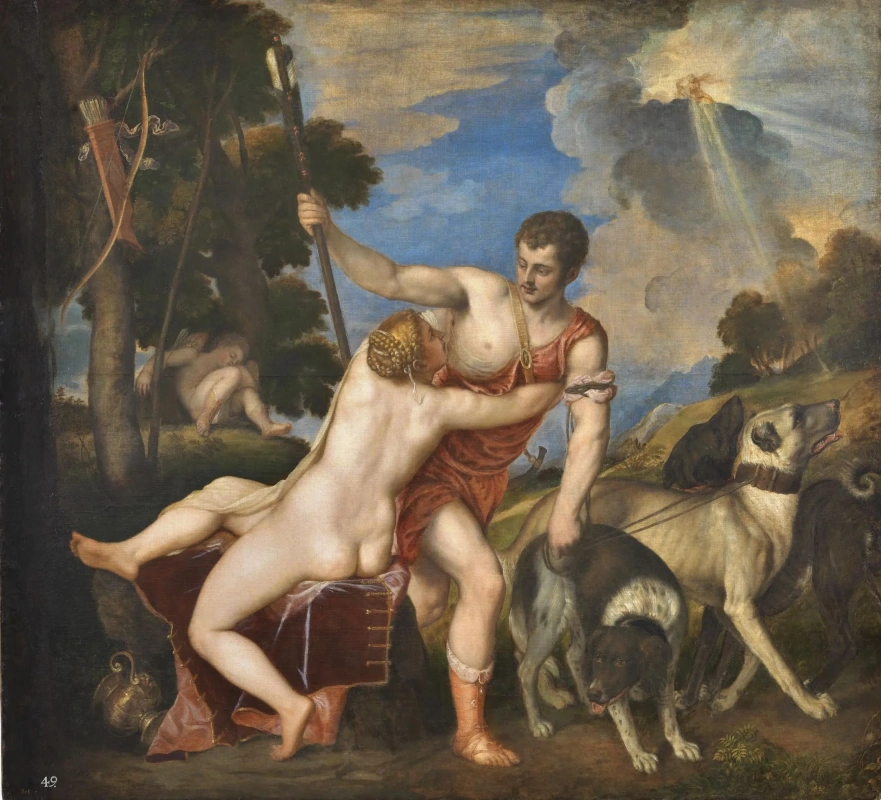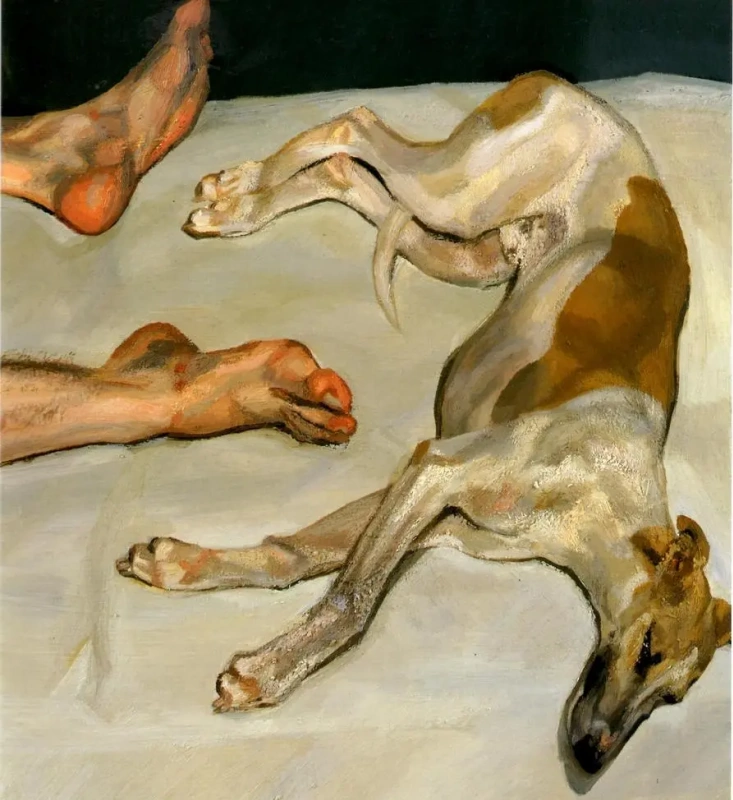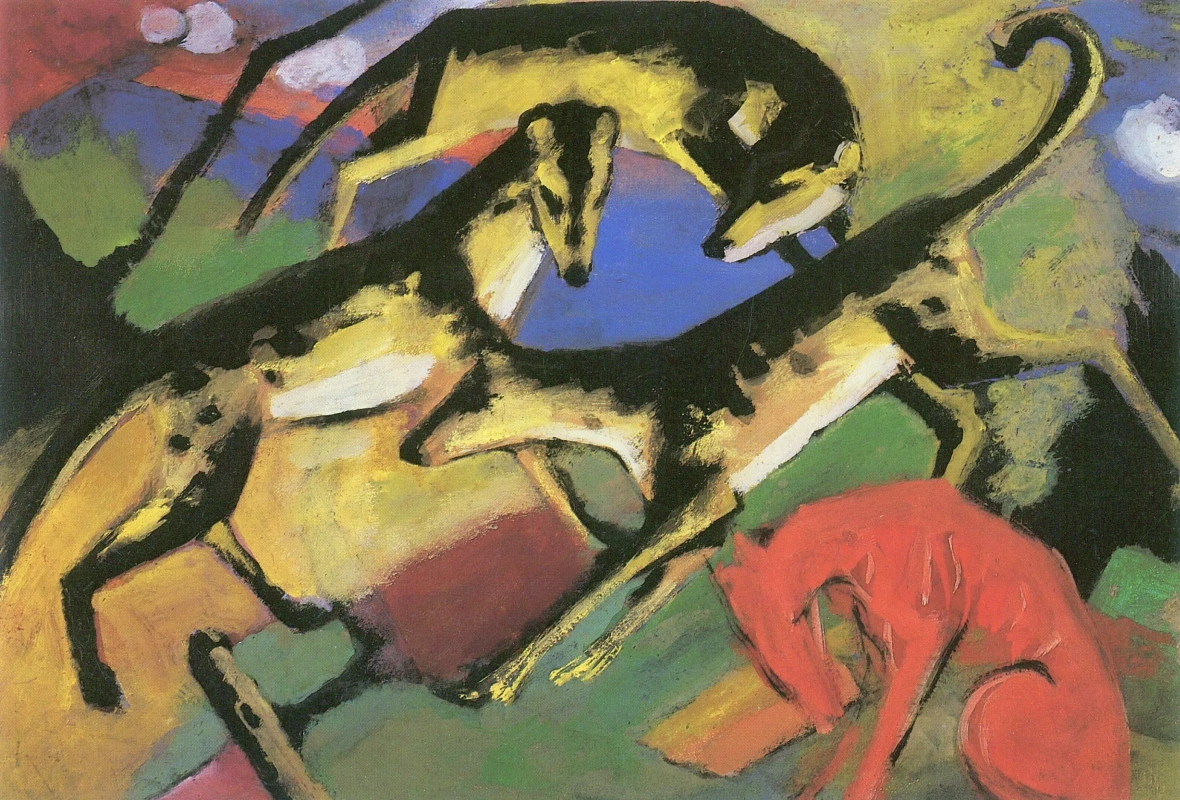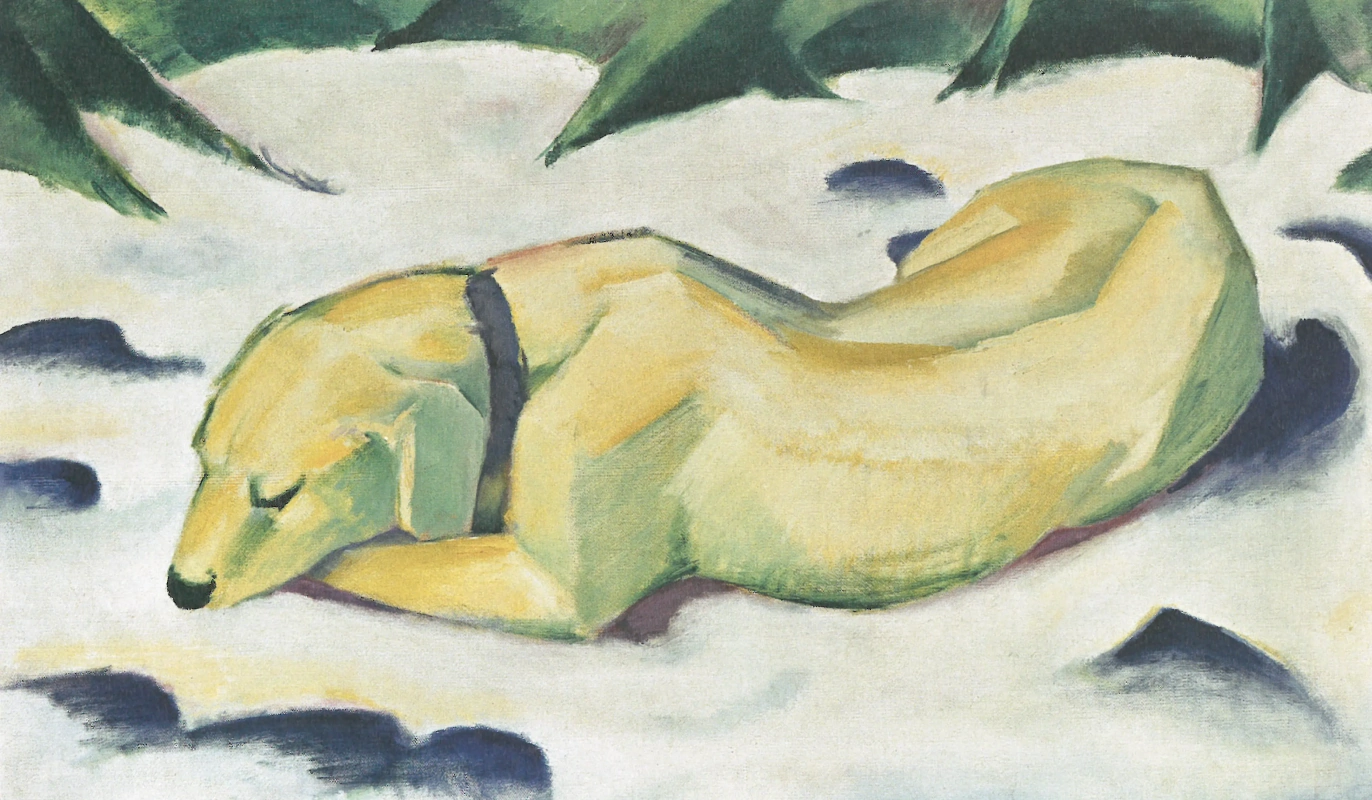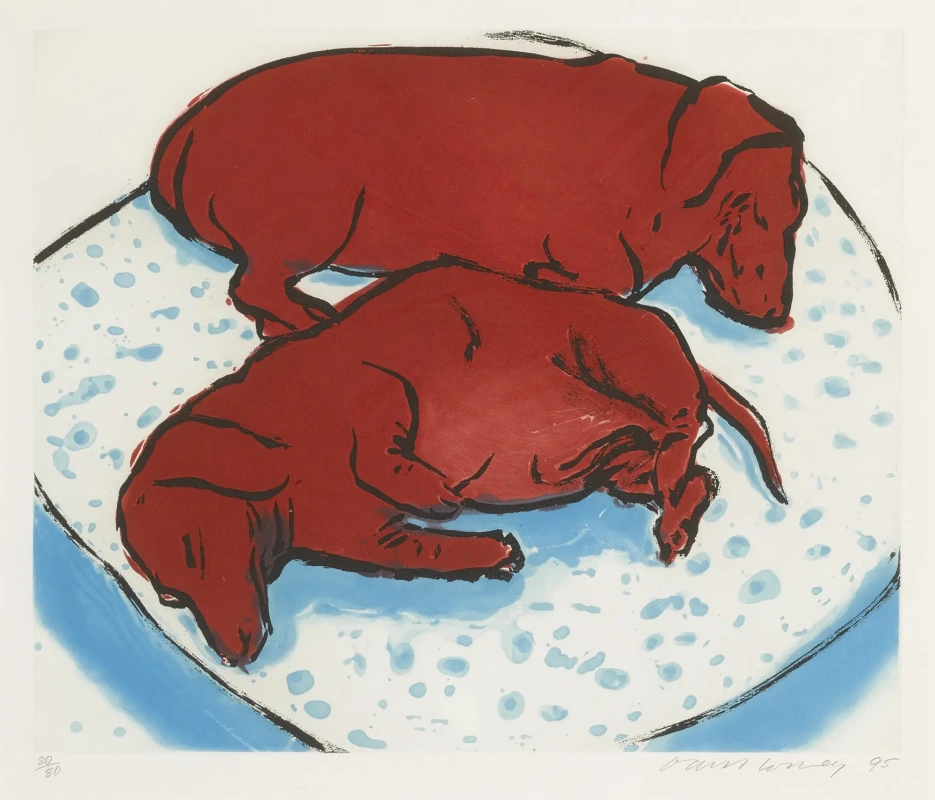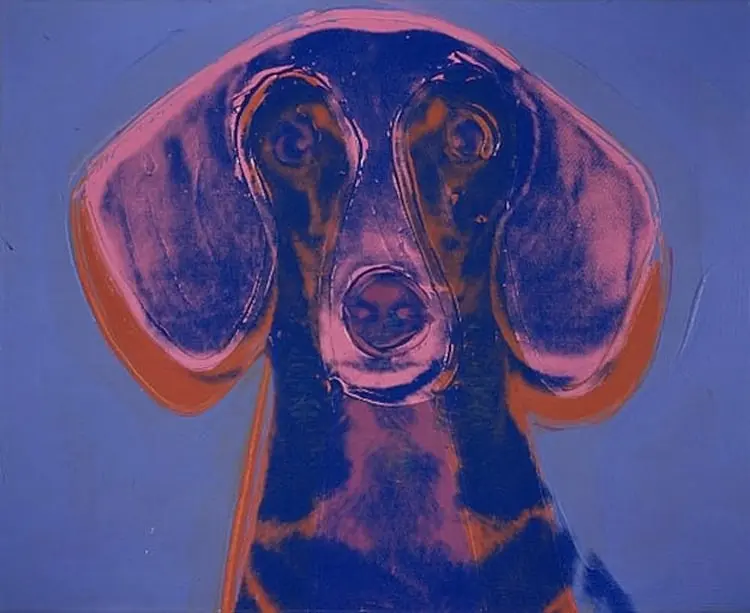На протяжении практически всей человеческой истории собаки служили не только защитниками, помощниками и компаньонами, но и музами. Их увековечивали в живописи и скульптуре, на гравюрах и фотографиях (и даже в монументальных творениях в форме воздушного шарика). Сейчас, спустя много веков, собаки по-прежнему сопровождают человека и служат живым символом защиты, верности и безусловной любви. Поэтому несложно понять, почему они так долго являются очень важной и яркой частью нашей визуальной истории.

Символизм в разных культурах
Долгое время собаки считались своего рода проводниками, связующим звеном между физическим и потусторонним миром. Древние египтяне, греки, римляне, кельты и другие народы назначали собаку священным хранителем иных миров — тех, которые находятся за пределами нашего повседневного опыта. Именно по этой причине собаку иногда называют символом смерти — поскольку она может служить стражем эфемерных областей и проводником во внетелесных путешествиях. Здесь можно вспомнить и египетского бога Анубиса с головой шакала, который сопровождал умерших в загробный мир.
Собака — священное животное греческой богини Гекаты, повелительницы теней, богини мрака, волшебства и ночных кошмаров. Однако Геката и ее верные псы еще и служат охранниками и защитниками тех, кто не может постоять за себя сам: детей и младенцев, слабых и кротких, безумных и оклеветанных.
У кельтов собаки служили символом героизма, воплощая в себе такие важные для воинов качества, как отвага, выносливость и мужество. Кельты не только использовали собак для охоты, но и обучали их для помощи в битвах. При этом здесь собака была еще и символом врачевания: этих животных часто ассоциировали с Ноденсом — богом питательных вод, охоты и исцеления.
В Китае, как и у большинства народов, собаки издавна считаются символом верности и послушания, но кроме этого — удачи и процветания. Считается, что виляющая хвостом собака предвещает приход богатства. А мощный защитный талисман по фен-шуй — пара собак Фу — охраняет дом от злых людей и негативной энергии, помогает достичь успеха в делах и материального благополучия. Собак Фу еще называют небесными львами Будды, поэтому пекинесов изначально разводили и скрещивали таким образом, чтобы они были как можно сильнее похожи на миниатюрных львов.
У кельтов собаки служили символом героизма, воплощая в себе такие важные для воинов качества, как отвага, выносливость и мужество. Кельты не только использовали собак для охоты, но и обучали их для помощи в битвах. При этом здесь собака была еще и символом врачевания: этих животных часто ассоциировали с Ноденсом — богом питательных вод, охоты и исцеления.
В Китае, как и у большинства народов, собаки издавна считаются символом верности и послушания, но кроме этого — удачи и процветания. Считается, что виляющая хвостом собака предвещает приход богатства. А мощный защитный талисман по фен-шуй — пара собак Фу — охраняет дом от злых людей и негативной энергии, помогает достичь успеха в делах и материального благополучия. Собак Фу еще называют небесными львами Будды, поэтому пекинесов изначально разводили и скрещивали таким образом, чтобы они были как можно сильнее похожи на миниатюрных львов.

Собаки Фу, XIX век
Японская енотовидная собака — Тануки — один из любимых и часто встречающихся героев в японском искусстве (как традиционном, так и современном). В японском фольклоре и легендах этих животных часто наделяли сверхъестественными способностями. Как и лиса-оборотень Кицунэ, Тануки умеет превращаться в других существ и в неодушевленные предметы. В самых ранних легендах эти животные предвещали беду, они могли принимать человеческий облик, преследовали и вселялись в людей. Сейчас, много веков спустя, Тануки превратился в безобидного, в общем-то, трикстера — озорника и обманщика. Керамические статуи Тануки можно часто встретить по всей Японии, особенно в барах и ресторанах.
В традиционном японском искусстве Тануки часто изображают под луной, поскольку считалось, что именно в ночь полнолуния он превращается в других существ. Интересно, что это роднит легенды о енотовидной собаке с другими легендами об оборотнях, распространенных в разных странах по всему миру. В древнем китайском и японском фольклоре услышать вой Тануки под луной по большей части считалось дурным предзнаменованием, но в некоторых случаях оно могло, наоборот, предвещать удачу.
В традиционном японском искусстве Тануки часто изображают под луной, поскольку считалось, что именно в ночь полнолуния он превращается в других существ. Интересно, что это роднит легенды о енотовидной собаке с другими легендами об оборотнях, распространенных в разных странах по всему миру. В древнем китайском и японском фольклоре услышать вой Тануки под луной по большей части считалось дурным предзнаменованием, но в некоторых случаях оно могло, наоборот, предвещать удачу.
Охрана и охота
Датируемые бронзовым веком пещеры и гробницы часто украшены рисунками и статуями собак (по большей части — охотничьих). Даже среди древних детских игрушек и в узорах на керамических изделиях можно обнаружить этих животных.Древние греки и римляне ценили собак за преданность и отвагу и в качестве домашних животных предпочитали их кошкам. На греческих и римских рельефах и керамике собаки изображались как символ верности. Собаки были домашними любимцами, символом статуса, охранниками и охотниками. Греки ценили этих животных за доверие и любовь. В рисунках на древнегреческих вазах частым сюжетом было возвращение Одиссея домой после странствий и встреча со своим старым псом Аргусом — единственным, кто узнал Одиссея и умер, дождавшись хозяина.
Древние римляне держали в основном три вида собак: охотничьих, чаще всего борзых (их увековечивали в виде скульптур); крупных сторожевых вроде неаполитанского мастифа (их изображения чаще использовали в рельефах и мозаиках с надписью «Cave Canem»); маленьких декоративных собак, например, мальтийских болонок, обычно заводили женщины, и в искусстве того периода их практически не найти. Животные крупных пород больше ценились из-за того, что их можно было использовать во время битв или охоты на волков.

Преданность и аристократизм
В Средневековье собаки по-прежнему считались символом верности и преданности. По этой причине их стали изображать не только в аллегорических сюжетах, но и на парных супружеских портретах (чаще всего — у ног или на коленях женщины). Собака, присутствующая на портрете вдовы, символизировала ее верность умершему супругу. Кроме того, в Средневековье изображения этих животных высекали на надгробных камнях, чтобы подчеркнуть феодальную или супружескую верность усопшего.Ярким примером символического изображения собаки может служить «Портрет четы Арнольфини» Яна ван Эйка, хотя в этом случае исследователи не пришли к единому мнению. С одной стороны, собака на этом семейном портрете может символизировать супружескую верность, а с другой — страсть и вожделение, стремление пары иметь ребенка. В конце концов, это вполне мог быть реально существующий домашний питомец, и тогда художник запечатлел его на холсте, чтобы подчеркнуть благосостояние семейства Арнольфини.
В средневековом искусстве получили широкое распространение сюжеты, изображающие людей и животных во время охоты. Человек, запечатленный вместе с охотничьими собаками или соколами, таким образом заявлял о своем социальном статусе, поскольку в то время охота была развлечением исключительно для аристократии и неотъемлемой частью придворного этикета. Кроме того, несмотря на развитие сельского хозяйства, охота по-прежнему оставалась важным источником пищи. Знатные люди тратили много денег на покупку специально выведенных гончих не только ради статуса, но и для того, чтобы обеспечить свою семью мясом.
Видение св. Евстафия
53×65 см
Политика и человечность
В эпоху Возрождения собаки прочно обосновались в европейском искусстве. В Италии XVI века аристократы часто заказывали собственные портреты со своими питомцами, чтобы продемонстрировать высокий социальный статус. Например, на одной из фресок Андреа Мантеньи в «Камера пикта» в Мантуе под креслом маркиза Лудовико Гонзага удобно устроился его любимый пес Рубино.Одним из самых больших ценителей и знатоков собак в искусстве Ренессанса считается Якопо да Понте Бассано. Точность и достоверность, с которыми художник изображает псов, например, на картинах «Поклонение волхвов» или «Добрый самаритянин», говорит о том, что Бассано наверняка проводил много времени, наблюдая за этими животными, изучая их строение и повадки.
Поклонение волхвов
1540-е
, 183×235 см
Добрый самаритянин
1563, 102.1×79.7 см
Особое место занимают собаки и в творчестве Тициана. Они стали чаще появляться на его картинах в 1530-х годах, примерно в то время, когда художник переехал в большой «статусный» дом с садом и завел нескольких псов. Одна из самых ярких «собачьих» работ Тициана — портрет
маленькой Клариссы Строцци с комнатной собачкой породы папийон. Кларисса, дочь Роберто Строцци и Маддалены Медичи, была наследницей двух знатных флорентийских родов, так что это в определенном смысле «политический» портрет
. И хотя тяжелые украшения на ребенке подчеркивают ее высокое происхождение, присутствие собаки рядом с девочкой привносят в портрет некоторую долю детской беззаботности. То же самое можно сказать и о групповом портрете семейства Вендрамин, в который Тициан добавил нотку человечности и несерьезности, усадив на колени одного из мальчиков такого же бело-рыжего папийона. Похожая собака спит, свернувшись калачиком, на постели «Венеры Урбинской».
Тициан использовал изображения собак как статусного символа знати и в своих картинах с мифологическими сюжетами, которые он писал для короля Испании Филиппа II. Одна из них посвящена знаменитому мифу об охотнике Актеоне, который случайно застал богиню Диану (Артемиду) за купанием, в наказание был превращен в оленя и убит собственными псами. Собака Актеона вновь появляется на другой картине Тициана — «Диана и Каллисто» — и здесь она, по всей видимости, уже принадлежит богине. Гончие псы в похожих позах присутствуют во всех трех версиях картины «Венера и Адонис». Тициан выбирал именно эти мифологические сюжеты, поскольку его заказчик, король Филипп II, был страстным любителем охоты.
Диана и Актеон
1559, 184.5×202.2 см
Диана и Каллисто
1559, 187×204.5 см
Венера и Адонис
1554, 186×207 см
Образ жизни и личные качества
В XVI и XVII веках, хотя собаки появлялись в живописи чаще всего в охотничьих сценах или на коленях знатных дам, некоторые художники все же использовали их изображения в качестве символических образов. Жан-Леон Жером, к примеру, изобразил древнего философа Диогена в компании псов, делая отсылку к философской школе киников (от древнегреческого κύων - собака). Антисфен Афинский, считающийся основателем этой школы, полагал, что для достижения блага нужно жить «подобно собаке» — следовать своей природе, уметь постоять за себя, быть верным, храбрым и благородным. Диоген был одним из самых ярых приверженцев кинизма, и на могиле философа даже установили мраморный памятник со скульптурой собаки.Еще в эпоху Ренессанса начали разрабатываться и устанавливаться стандарты собачьих пород. И уже в XVIII веке в живописи стали появляться полноценные портреты собак, причем иногда за этими портретами стояли удивительные истории. Например, в 1831 году Эдвин Ландсир написал портрет
ньюфаундленда по кличке Боб. Этот огромный пес был спасен после кораблекрушения у берегов Англии и поселился в лондонском порту. Боб и сам стал спасателем — за 14 лет он вытащил из воды более 20 тонущих людей. За эти заслуги пса сделали почетным членом Королевского гуманитарного общества, наградили медалью и обеспечивали едой. С тех пор отдельная порода черно-белых собак, родственных ньюфаундлендам, носит название Ландсир.
Достойный член гуманного общества
1831, 111.8×143.5 см
P.S.
ХХ век со всеми его стремительными переменами и многообразием стилей подарил собакам огромное количество новых обличий. Кассиус М. Кулидж «очеловечил» собак, усадив их за покерный стол. Франц Марк, который любил не только лошадей, писал спящих и играющих собак в своей уникальной манере. Дэвид Хокни нарисовал бессчетное количество портретов своих такс. Домашних любимцев писали Эдвард Мунк, Фрида Кало, Энди Уорхол и Люсьен Фрейд.В определенном смысле в искусстве ХХ века на передний план гораздо чаще стала выходить личность самого художника, и любой выбранный им сюжет (в том числе и изображение собаки) больше говорит о нем самом, чем несет глубинное символическое значение.
Заглавная иллюстрация: Геррит (Герард) Доу — «Спящая собака и глиняный горшок» (1650).
Pittori citati nell'articolo








